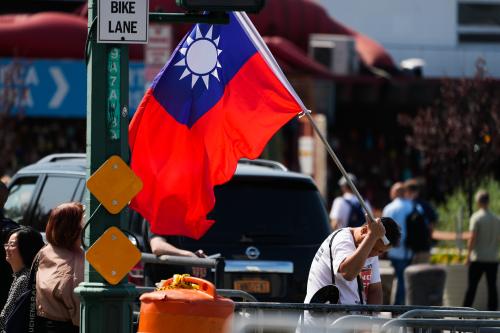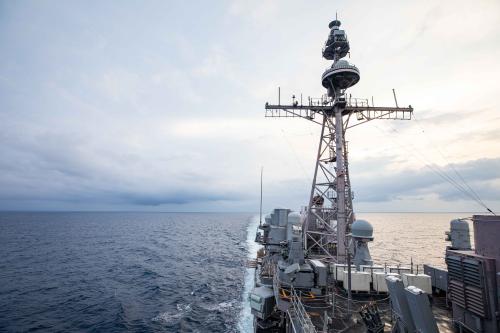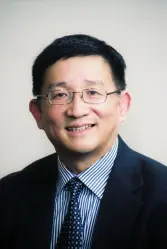China’s political clock is winding fast toward the convening of the 20th Party Congress. Both the Chinese public and overseas China-watching community will rightly pay close attention to the leadership lineup, which will be announced after the meeting. Thus far, there have been no leaks of important information surrounding this forthcoming leadership reshuffle.
At the previous Party Congresses in the post-Deng era, the norms of ensuring the representation of competing factions and enforcing the mandatory retirement age provided some clues about the composition of the top leadership. But the selection of the Politburo Standing Committee (PSC) this time will be decided primarily by Chinese President Xi Jinping. Previous norms and rules no longer apply. Therefore, understanding Xi’s objectives and concerns are critical when analyzing Chinese leadership.
Xi consolidated his power at a remarkable pace and scale during his first two terms, and he now possesses the greatest authority and influence in the Party establishment since Deng (if not since Mao). Yet Xi still confronts three “difficulties” (nandian) in deciding his personnel appointments at the highest echelon of power. This is partially a result of his call for leadership unity at a time when China faces what Xi calls “unprecedented” (qiansuoweiyou) challenges on both the domestic policy and foreign relations fronts and partially because of his long-term consideration of the inevitable political succession in Zhongnanhai, the Chinese Communist Party’s central headquarters.
Difficulty #1: Promoting more newcomers to the Politburo Standing Committee
Xi needs to vacate at least three — and most likely four — seats on the current PSC for newcomers, especially for the so-called 6G leaders (those born in the 1960s). The oldest member, Li Zhanshu, will surely step down. The age span of the other five members, however, is only three years (see Table 1). There are no objective criteria for determining who will stay and leave.

One of the retiring PSC members will likely serve as vice president of the People’s Republic of China. Li Zhanshu is the leader most likely to assume this position. But what about the other two or three leaders? The concern for Xi is not just potential resentment from the leaders who step down, but also a sense of unfairness among many others.
Difficulty #2: Ensuring unpredictability of a possible successor
There are no signs that Xi will choose his successor at this Party Congress. Unsurprisingly, Xi does not want to become a lame duck during his third term. The reason for not designating a successor could be benign: A possible successor needs to be tested with various leadership responsibilities and to be accepted by the political establishment and the public. This explains why Xi needs to promote more than two younger leaders to the PSC, or as many as four to five if he expands the PSC from seven to nine seats (for the candidates, see Table 2). If he promotes only two 6G leaders, the Chinese public and foreign media will immediately speculate that one leader will be in line to succeed Xi and the other will become premier in five years.

Furthermore, not all members of the PSC are equal. The first four positions hold a higher status than the last three positions. Xi will likely have 5G leaders (those born in the 1950s) serving in the first four positions, which may suggest that he is hesitant to choose a 6G member as premier, who would rank third on the PSC.
Difficulty #3: Choosing a premier to signal policy trajectory
The position of premier is not as important as before, given that Xi is deeply engaged in economic and foreign affairs. Yet the premier can still serve as a face for China. Based on Chinese norms, all previous premiers have first served as vice premier (except for the first premier, Zhou Enlai). If norms are applied, there are four candidates for the premiership: Han Zheng, Hu Chunhua, Liu He, and Wang Yang (see Table 3).

Each has strengths and disadvantages. The premier who is ultimately chosen may signal Xi’s primary needs and political and policy considerations: Han Zheng for policy continuity, Hu Chunhua for leadership unity, Liu He for international popularity, and Wang Yang for drastic policy changes. Personnel is policy, and Xi’s need to balance competing policy trajectories and political considerations is a challenge.
The leadership announcements that lie ahead will show people in China and the world how Xi Jinping intends to overcome these three difficulties. Indeed, how this reshuffle plays out will allow for a much better assessment of Xi’s ability to address the issues of leadership unity, sociopolitical stability, economic development, and foreign policy in the coming years.
The Brookings Institution is committed to quality, independence, and impact.
We are supported by a diverse array of funders. In line with our values and policies, each Brookings publication represents the sole views of its author(s).







Commentary
Xi’s three difficulties: The leadership lineup at the 20th Party Congress
October 13, 2022